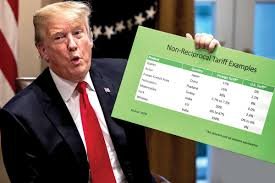UK Exporters Face Steep Decline as Trump Tariff Fears Reshape Trade Strategy

By Maria Kalamatas
London, UNITED KINGDOM —
British manufacturers are reporting their steepest drop in export orders since May 2020, as fears over a second wave of U.S. tariffs under President Donald Trump’s administration disrupt transatlantic supply chain planning.
According to the latest S&P Global/CIPS Manufacturing PMI, released on May 3, the UK’s export index fell to 45.4, marking the seventh consecutive month of contraction and the largest single-month dip since the peak of the COVID-19 pandemic.
“The sector is in a defensive crouch,” said Rob Dobson, Director at S&P Global Market Intelligence. “There’s no certainty over which goods might be targeted next, so manufacturers are stalling investment and rethinking routing.”
US, EU, and China: simultaneous contractions
The PMI report cited sharp export declines not only to the United States but also to the European Union and China, underscoring a global cooling of demand. “It’s the first time in years we’ve seen all three major markets pull back in sync,” Dobson added.
For companies like Wexford Components Ltd., which manufactures precision parts for aerospace suppliers, the environment is especially punishing. “We’ve postponed two major shipments to Dallas and Munich,” said CEO Siobhan Patel. “Our buyers are asking for renegotiated terms or are shifting to U.S.-based vendors.”
Government caught between policy and politics
The UK government has pledged to “support exporters through policy stability,” yet has not ruled out retaliation if new U.S. tariffs hit automotive or medical device exports.
Trade Minister Kemi Badenoch acknowledged the challenge: “We’re walking a tightrope between maintaining our U.S. relationship and protecting domestic industries. Dialogue is ongoing, but so is damage.”
Ports and logistics partners brace for rerouting
Freight forwarders are already reacting. Several large clients have rerouted cargo away from Atlantic shipping routes in favor of Euro-Asia rail corridors, despite the longer transit times and border risks.
“There’s less volatility on the Iron Silk Road right now than through the Port of New York,” said Lianne Cooke, a senior logistics analyst at TransBridge UK.
2025: a year of hedging, not scaling
For UK exporters, the tone of the year is one of survival over scale. As Patel put it, “This isn’t about growing. It’s about getting your goods where they’re wanted—before policy decides they’re not.”
The post UK Exporters Face Steep Decline as Trump Tariff Fears Reshape Trade Strategy appeared first on The Logistic News.
Share this post
Related
Posts
MEXICO – Truckers’ roadblocks disrupt North American flows
Since dawn, several Mexican highways have looked more like improvised parking lots than logistical corridors. Groups of drivers block entire...
China Cargo Airlines launches new Paris–Shanghai freight service
China Cargo Airlines inaugurates a direct Paris–Shanghai freight flight, complemented by feeder road connections across Western Europe. This corridor meets...
Hudong-Zhonghua de Chine établit un nouveau record pour les livraisons de méthaniers
Chinese shipbuilder Hudong-Zhonghua Shipbuilding today delivered its ninth LNG carrier of the year, marking a new record for a single...
Onboard cameras: technology alone is insufficient in the absence of a true policy
The problem of cameras mounted on trucks was discussed at the Trimble Insight 2025 trade exhibition mainly from the aspect...




